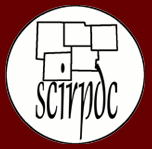







The Commission's professional staff has had the pleasure of assisting local governments within its five-county District in effective utilizing the funding provisions of the various grant programs administered by the Illinois Department of Natural Resources (IDNR).
The Open Space Lands Acquisition and Development (OSLAD) Program is a state-financed grant program that provides funding assistance to local government agencies for acquisition and/or development of land for public parks and open space. The federal Land & Water Conservation Fund program (known as both LWCF and LAWCON) is a similar program with similar objectives. Both are managed in Illinois by the Department of Natural Resources with concurrent application due dates, equal grant maximums and similar general rules.
Applications are evaluated and prioritized for funding assistance based upon recreation priorities and criteria identified in the Department's Statewide Comprehensive Outdoor Recreation Plan (SCORP). Lands acquired with OSLAD or LWCF funds are required to be operated and maintained in perpetuity for public outdoor recreation.
The Park and Recreational Facility Construction (PARC) Grant Program is a state-financed grant program that provides funding assistance to local government agencies for park and recreation unit construction projects. A park for recreation unit construction project means the acquisition, development, construction, reconstruction, rehabilitation, improvements, architectural planning, and installation of capital facilites consisting, but not limted to, buildings, structures, and land for park and recreation purposes and open spaces and natural ares.The program is managed by the Illinois Department of Natural Resources.
The PARC program operates on a reimbursement basis providing up to the following maximum percentages for funding assistance: the State will provide up to 75% of approved project costs, with the exception of those local governments defined as “disadvantaged”, which will be eligible for up to 90% funding.